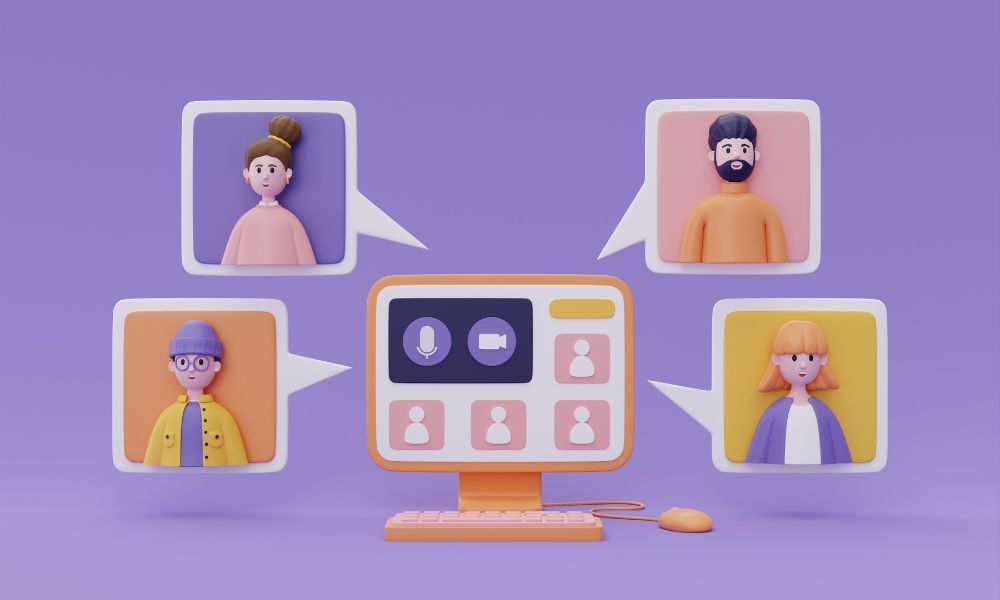Influencer collaboration platforms are transforming how brands discover, manage, and scale partnerships with creators. Instead of juggling spreadsheets, manual outreach, and disconnected tools, these platforms offer a centralized solution for handling everything, from influencer discovery and campaign workflows to payments and performance tracking.
As the creator economy grows, so does the need for efficient systems that support both brands and influencers. Whether you’re managing a product launch with 20 micro-influencers or running an ongoing ambassador program, collaboration platforms bring structure, automation, and measurable results.
This guide breaks down what these platforms do, who they’re best suited for, and which features matter most when choosing a solution. You’ll also explore common challenges to watch for, upcoming trends in the space, and why tools like Hypefy are helping brands run smarter, scalable campaigns.

What Are Influencer Collaboration Platforms?
Influencer collaboration platforms are software tools that help brands and agencies manage every stage of working with creators, from finding the right influencers to tracking results. Unlike traditional influencer marketing methods that rely heavily on manual outreach and disconnected tools, these platforms streamline the entire workflow in one place.
Most platforms offer features like influencer search with audience data, automated campaign tracking, messaging and content approvals, payment processing, affiliate tracking, and real-time reporting. Some tools act as marketplaces where brands can browse and contact pre-vetted influencers, while others function as full-service collaboration CRMs built for scaling long-term programs.
At their core, these platforms are designed to reduce complexity, save time, and increase ROI by giving teams better control over creator relationships, campaign execution, and performance analytics.
Who Should Use Influencer Collaboration Platforms?
Influencer collaboration platforms are valuable for any organization that works with creators at scale or needs a more structured approach to influencer marketing. These tools are especially beneficial for:
- Brands managing multiple campaigns or product lines
Whether you’re launching seasonal products or running always-on influencer initiatives, collaboration platforms help streamline communication, approvals, payments, and performance tracking across multiple touchpoints.
- Marketing agencies coordinating campaigns for clients
Agencies benefit from centralized dashboards, client-specific workspaces, and automated reporting tools that make it easier to manage diverse campaigns while delivering clear ROI to clients.
- E-commerce businesses aiming to drive sales with creators
From affiliate integrations to UGC licensing and TikTok Shop compatibility, many platforms are optimized for DTC brands that rely on influencer-driven product discovery and conversions.
- Startups with lean teams looking to scale efficiently
Startups often lack the time or bandwidth for manual influencer outreach. Collaboration platforms simplify campaign setup and reduce overhead with prebuilt templates, searchable influencer databases, and automated outreach flows.
💡Startups looking for efficient ways to scale should explore these influencer marketing strategies for startups.
- Publishers and media companies monetizing with creator content
Platforms help editorial and media brands manage collaborations with creators, whether for native content, branded integrations, or newsletter partnerships.
- Content-heavy businesses focused on building a creator ecosystem
Companies that depend on consistent content output, like beauty brands, SaaS tools, and consumer products, use platforms to manage influencer-generated assets, reuse content under license, and coordinate multi-creator campaigns efficiently.
If your business relies on creators to drive awareness, traffic, or sales, using a collaboration platform can reduce complexity, speed up execution, and help you scale campaigns without sacrificing control.
💡For brands in niche industries, targeted pages like Find and Hire Travel Influencers or Fitness Influencers make it easier to connect with creators who align with your vertical.

Key Features of Top Collaboration Platforms
Not all influencer collaboration platforms are built the same. The best ones combine automation, flexibility, and data insights to support every stage of the influencer lifecycle. Below are the core features that set top-performing platforms apart.
1. Influencer Discovery & AI Matching
Finding the right creators is one of the most important – and time-consuming – parts of any campaign. Top platforms offer powerful search filters, audience demographics, engagement metrics, and niche targeting – like the Hypefy Influencer Discovery Tool to help brands narrow down the right fit. AI matching further streamlines the process by recommending creators based on your brand goals, past collaborations, and performance trends.
2. Campaign & Collaboration Workflow Management
Once influencers are selected, collaboration platforms simplify the outreach process. Campaign briefs, content guidelines, timelines, messaging, and approvals are managed in one place. Look for platforms with visual pipelines or Kanban-style dashboards to keep teams aligned on deliverables, deadlines, and creator communication.
💡For smoother execution, use structured templates like those in our influencer brief guide to ensure creators understand campaign goals.
3. Integrated Payment & Affiliate Options
Managing influencer payments manually can lead to errors and delays. Leading platforms offer built-in payment automation, tax compliance, and international payout options. Many also support affiliate tracking, making it easy to compensate creators based on clicks, conversions, or sales. This integration is especially valuable for e-commerce brands using influencers as a performance channel.
4. Content Management & Rights Control (UGC Reuse)
Top platforms help brands organize, store, and repurpose influencer-generated content. This includes usage rights management, licensing terms, and tracking which content can be reused for paid ads, product pages, or social channels. With the rise of UGC as a conversion driver, having control over assets and permissions is critical.
5. Reporting & ROI Tracking
Understanding what works, and what doesn’t, is key to refining future campaigns. Strong reporting features include real-time dashboards, engagement breakdowns, influencer performance summaries, and ROI attribution. Some platforms also offer integrations with Shopify, Google Analytics, or TikTok to provide deeper visibility into sales impact and customer journeys.

How to Choose the Right Influencer Collaboration Platform
With dozens of tools available, selecting the right influencer collaboration platform comes down to your goals, team structure, and tech stack. Here are the key criteria to evaluate before committing to a solution.
1. Platform Type (Marketplace vs. Full-Stack CMS)
Some platforms function as creator marketplaces, giving brands access to a pool of pre-vetted influencers who can be contacted and hired directly. These tools are ideal for one-off collaborations or small-scale campaigns.
Others operate as full-stack influencer CRMs, supporting everything from discovery and outreach to content approvals, payments, and performance tracking. These are best suited for teams managing long-term programs, multiple campaigns, or large creator rosters.
The right choice depends on whether you need a quick-match platform for occasional projects or a robust system for building long-term creator relationships.
2. Pricing Models – Subscriptions, Commissions, Per-Campaign Fees
Influencer collaboration platforms typically fall into three pricing categories:
- Subscription-based: Flat monthly or annual fee for full platform access (common with enterprise and CRM-style tools).
- Commission-based: A percentage of payments made to influencers is charged by the platform (typical for marketplaces).
- Per-campaign fees: Pay only when launching a specific campaign or collaborating with a set number of creators.
Brands should factor in not just the platform’s base cost, but also potential transaction fees, creator payout charges, and scalability as campaign volume grows.
💡To get a deeper understanding of campaign budgeting, platform fees, and creator rates, read our full guide on the cost of influencer marketing.
3. Platform Scale and Audience Suitability (Nano, Micro, Macro, Niche)
Not all platforms are optimized for every influencer tier. Some are built specifically for nano- and micro-influencers, offering advanced filters for niche audiences, while others focus on managing high-volume macro or celebrity collaborations.
Make sure the platform you choose aligns with your target audience size, campaign goals, and vertical. For example, e-commerce brands often prioritize micro-influencers for conversion-driven campaigns, while large consumer brands may invest in macro reach.
💡If you’re unsure which influencer tier aligns best with your goals, check out our comparison of nano vs. micro influencers to make a more informed decision.
4. Integration and Tool Compatibility (Shopify, CRM, Analytics)
To avoid tech silos, choose a platform that integrates with the tools your team already uses. Key integrations include:
- E-commerce platforms like Shopify or WooCommerce for tracking conversions
- CRM tools like HubSpot or Salesforce for syncing influencer contacts and customer data
- Analytics tools like Google Analytics, Meta Pixel, or TikTok Ads Manager for campaign attribution
The more seamless the integration, the easier it is to measure ROI, reuse influencer data, and scale campaigns across teams.
Benefits of Using Collaboration Platforms
Influencer collaboration platforms are more than just time-savers, they help brands run campaigns more efficiently, reduce manual errors, and gain better control over performance. Here are the key benefits:
- More Efficient Influencer Discovery: Advanced filters, AI matching, and audience analytics make it easier to find the right creators based on your campaign goals. Instead of hours spent browsing social media, platforms deliver curated results in minutes.
- Automated Payment & Compliance Tracking: Built-in payment tools handle creator payouts, tax documents, and global compliance, reducing the administrative load on your team and ensuring smooth, on-time transactions.
- Better Content Control and Usage Rights: Manage, approve, and repurpose influencer-generated content from one central place. Platforms often include usage rights tracking, so you always know what content can be used in paid ads, social posts, or product pages.
- Clear Campaign Metrics and ROI Reporting: Real-time dashboards and analytics show you what’s working, from engagement rates to conversions. This allows for smarter decision-making and better reporting to stakeholders or clients.
- Scalable Workflows Across Creators and Teams: Whether you’re running a campaign with five influencers or 50, collaboration platforms help you stay organized. Assign tasks, set deadlines, and track progress across teams without losing control of timelines or deliverables.

Common Drawbacks & How to Navigate Them
While influencer collaboration platforms offer major advantages, there are also a few challenges that brands should be aware of. Understanding these drawbacks upfront and knowing how to handle them, can help ensure a smoother experience.
- Platform Costs and Contracts
Some tools lock brands into long-term contracts or charge fees that don’t align with actual usage. To avoid overspending, look for platforms that offer flexible pricing models, scalable plans, or trial periods to test before committing.
- Platform Fatigue or Fragmented Communication
If your team or creators are juggling multiple platforms, it can lead to confusion and missed deadlines. Choose a tool that consolidates messaging, briefs, content approvals, and payments in one dashboard to reduce back-and-forth.
- Risk of Creator Mismatch or Poor Engagement
AI matching helps, but there’s still a risk of partnering with influencers who don’t align with your brand voice or fail to drive engagement. Always review past content, audience quality, and campaign results before moving forward, and prioritize platforms that offer detailed performance metrics and collaboration history.
- How to Avoid Lock-In and Maintain Campaign Flexibility
Some platforms limit your ability to export data, content, or influencer relationships. To stay agile, choose a solution that gives you control over your creator database and campaign assets. Look for tools with open integrations, CSV exports, and content reuse permissions built in.
Trends & Future of Influencer Collaboration Platforms
As influencer marketing matures, collaboration platforms are evolving to meet the growing demands of brands, creators, and consumers. Here are the key trends shaping the next generation of tools:
AI and Automation Accelerating Matchmaking and Workflows
Artificial intelligence is increasingly being used to recommend creators based on brand fit, predict campaign outcomes, and even automate brief creation and influencer outreach. Smart workflow tools are helping teams scale faster with less manual input.
Emergence of Creator-Led Shopping Hubs
Platforms are shifting from just campaign tools to full ecosystems that support creator-led commerce. Influencers now build curated storefronts, product circles, and affiliate collections, turning collaboration platforms into performance marketing engines.
Consolidation and Ecosystem Expansion
Major marketing groups and tech firms are acquiring influencer platforms, integrating them into broader advertising stacks. As a result, tools are becoming more robust, offering deeper analytics, paid media support, and better integrations with ecommerce, CRM, and ad platforms.
Focus on Measurement and Attribution
As marketing budgets tighten, brands are demanding clearer ROI. Future-ready platforms are investing in first-party data tracking, sales attribution, and influencer LTV metrics to justify spend and prove impact beyond vanity metrics.
The platforms that stay ahead are those that combine automation with transparency, making it easier for brands to manage relationships, measure results, and scale with confidence.

Why Choose Hypefy as Your Influencer Collaboration Platform?
Influencer collaboration platforms are no longer optional, they’re essential for running structured, scalable, and results-driven campaigns. The right platform helps teams move faster, stay organized, and get more from every creator relationship.
Hypefy is built to support exactly that. It combines influencer discovery, campaign management, payments, and performance tracking in one centralized platform, designed for growing brands, ecommerce teams, and agencies that need a smarter way to collaborate with creators. Whether you’re running one campaign or managing dozens at scale, Hypefy helps you stay in control while delivering measurable results.
Ready to simplify your influencer collaborations? Explore Hypefy’s full platform or book a demo to see how it can work for your brand.



